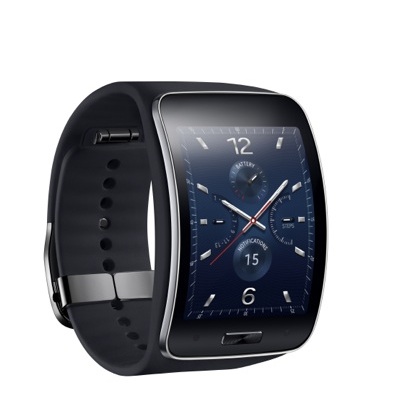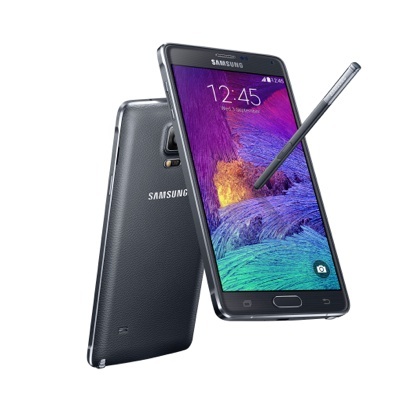 Prior to this week’s IFA show in Berlin, Samsung showed off its third Tizen Linux-based smartwatch. The Gear S offers several innovations compared to the Tizen-based Gear 2 and Gear Neo smartwatches, including autonomous operation and a curved screen. The Gear S will ship in Korea in October, followed by a global launch. According to this mostly favorable CNET Gear S hands-on, there are no current plans for a U.S. launch.
Prior to this week’s IFA show in Berlin, Samsung showed off its third Tizen Linux-based smartwatch. The Gear S offers several innovations compared to the Tizen-based Gear 2 and Gear Neo smartwatches, including autonomous operation and a curved screen. The Gear S will ship in Korea in October, followed by a global launch. According to this mostly favorable CNET Gear S hands-on, there are no current plans for a U.S. launch.
Unlike the flagship Gear models, as well as the Android Wear devices that have been announced so far this week, such as the Asus ZenWatch and Sony Smartwatch3, the Gear S integrates WiFi and 3G radios, and can act as a standalone wrist-phone when you’re out of Bluetooth range of your smartphone. The other major innovation is the curved Super AMOLED screen, which at 2.00 inches and 480 x 360 pixels, is larger and higher resolution than the flat, 1.63-inch displays on the earlier Tizen watches, which were limited to 320 x 320 pixels. These include the original, Android-based Galaxy Gear watch, which as of July, is available with Tizen as well. Samsung also has a new Android Wear offering — the Gear Live— which has a similarly flat 1.63-inch screen.
Like its predecessors, the Gear S runs Tizen on a 1GHz, dual-core processor, once again with 512MB RAM and 4GB flash. Other similar features include IP67 water-proofing, fitness sensors, and a 300mAh battery. Samsung has added a 350mAh battery recharger option that snaps onto the back. One feature missing from the original models, however, is the 2-megapixel camera.
The Gear S lets you make and receive phone calls, swap texts, and view notifications on its own via 3G or WiFi. With the help of the watch’s built in GPS/GLONASS transceiver and the HERE navigation service, you can also listen to turn-by-turn directions. A tiny onscreen QWERTY keyboard is available along with S Voice commands for input. The Gear S can also act like a typical Bluetooth accessory, but as before, it unfortunately requires a Samsung phone with Android 4.3 or higher.
The Gear S may not be as feature-rich as some lower profile Android smartwatches that appeared before the Android Wear trend, such as the Neptune Pine and Omate TrueSmart. However, it appears to have found a nice balance while keeping the watch fairly stylish. Although the screen size is pushing the limits of the sartorially acceptable, the curved screen makes it look more like a normal watch.
According to Samsung, some 1,000 Tizen apps will be available for the Gear S when it ships in October. The company released a Tizen software development kit back in March.
The Gear S isn’t the only smartwatch to offer a curved screen. The Asus ZenWatch announced this week at IFA with a 199 euro (about $262) price, has a slight curve to its screen. However, the IP55-protected Android Wear watch is not as curvy as the Gear S, and it’s limited to a 1.63-inch, 320 x 320 AMOLED display.
Sony just announced a SmartWatch 3 Android Wear watch with another flat, 1.6-inch 320 x 320 display. The IP68 protected watch is notable, however, for its 1.2GHz, quad-core Cortex-A7 processor.
Samsung Galaxy Note and Gear VR Headset
The Gear S was just one of many Samsung announcements this week, but it was the only one so far involving Tizen. The Russia-destined Samsung Z Tizen phone announced earlier this summer appears to have been postponed indefinitely. Tizen is on the move in other areas, however. Over the last year Samsung has added  Tizen to several consumer electronics devices, including a camera and refrigerator, and although Samsung is not involved, Tizen-based in-vehicle infotainment systems are winding their way toward a release, perhaps as early as next year. We’re also waiting to see if Samsung adds Tizen to the hub offered by SmartThings, a home automation firm it is acquiring for $200 million.
Tizen to several consumer electronics devices, including a camera and refrigerator, and although Samsung is not involved, Tizen-based in-vehicle infotainment systems are winding their way toward a release, perhaps as early as next year. We’re also waiting to see if Samsung adds Tizen to the hub offered by SmartThings, a home automation firm it is acquiring for $200 million.
At IFA, most of the Samsung news was about Android. The main event was the unveiling of the Galaxy Note 4 Android 4.4 phablet, which offers a 5.7-inch, 2560 x 1440 Super AMOLED screen. The large phone features either a 2.7GHz quad-core Snapdragon 805 or a 1.9GHz Octa-core processor depending on the market, and supplies both 16- and 3.7-megapixel cameras. It’s also available in an unusual Edge version that features a 5.6-inch screen that curves around the side edge of the device. This provides an additional thin, horizontal screen providing information such as weather and time.
Other Samsung announcements include a Bluetooth headphone accessory called the Gear Circle, as well as a Gear VR headset that incorporates Oculus virtual reality software. The Gear VR lets you plug in your own Galaxy Note 4 phablet to act as the device’s main computer and display. This will supposedly reduce the price of the goggles themselves when they ship in the fall.



